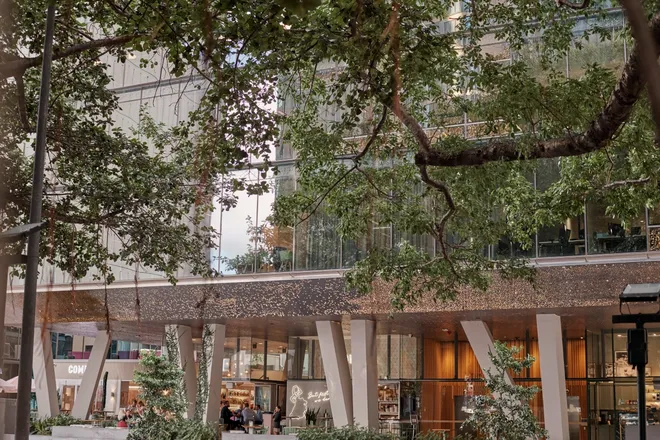BVN Stories — October 12, 2021
BVN joins call for Net Zero Emissions to be mandated for all new homes

BVN supports #ArchitectsDeclare, a collective of many major Australian architecture firms in calling for the federal government to update the National Construction Code to mandate net-zero emissions for new housing.
- There are only a few days left to have a say on proposed changes to the National Construction Code. Have your say here.
- The proposed changes include a tiny increase to the minimum standard of carbon emissions. allowed for new houses: from 6 to 7.
- This proposed change is insufficient.
- BVN supports the call for the standard to be increased to net-zero emissions.
- This standard would require that all new homes be designed as energy-efficient, have roofs. oriented for solar access, including photovoltaics and batteries, and no gas. This will enable. homes to run entirely on self-generated renewable solar power.
- These elements will add approx. 2% to the cost of building.
- This cost is more than offset by savings to energy costs, from efficiency and using solar.
- To help - a GetUp petition is underway.
Australian homes contribute 13-20% of our national CO2 emissions, but they simply don’t need to. The Australian architecture and building industry know how to create net-zero emission homes – cost-effectively. It simply requires energy-efficient design, roofs to be oriented for solar access, and photovoltaics to be installed.
The additional costs for a net-zero home compared to a 7* home are very low, about 2%. This equates to roughly the savings in energy costs that a net-zero emissions home would accrue in the first 5-10 years.
Under the government’s proposed updates, each average-sized new home will still be allowed to cause 5 tonnes of carbon emissions every year. To offset this would require 3000 new trees per house per year.
What are photovoltaics? Cells that enable solar panels to turn light into energy. Read more here.
The most recent report by the UN’s Intergovernmental Panel on Climate Change shows that immediate and sustained emissions reductions are needed to reduce the impacts of climate change on the next generation.
Changing the building code can do just this if it sets a new standard for all new houses to be designed and built with Net Zero Emissions.


